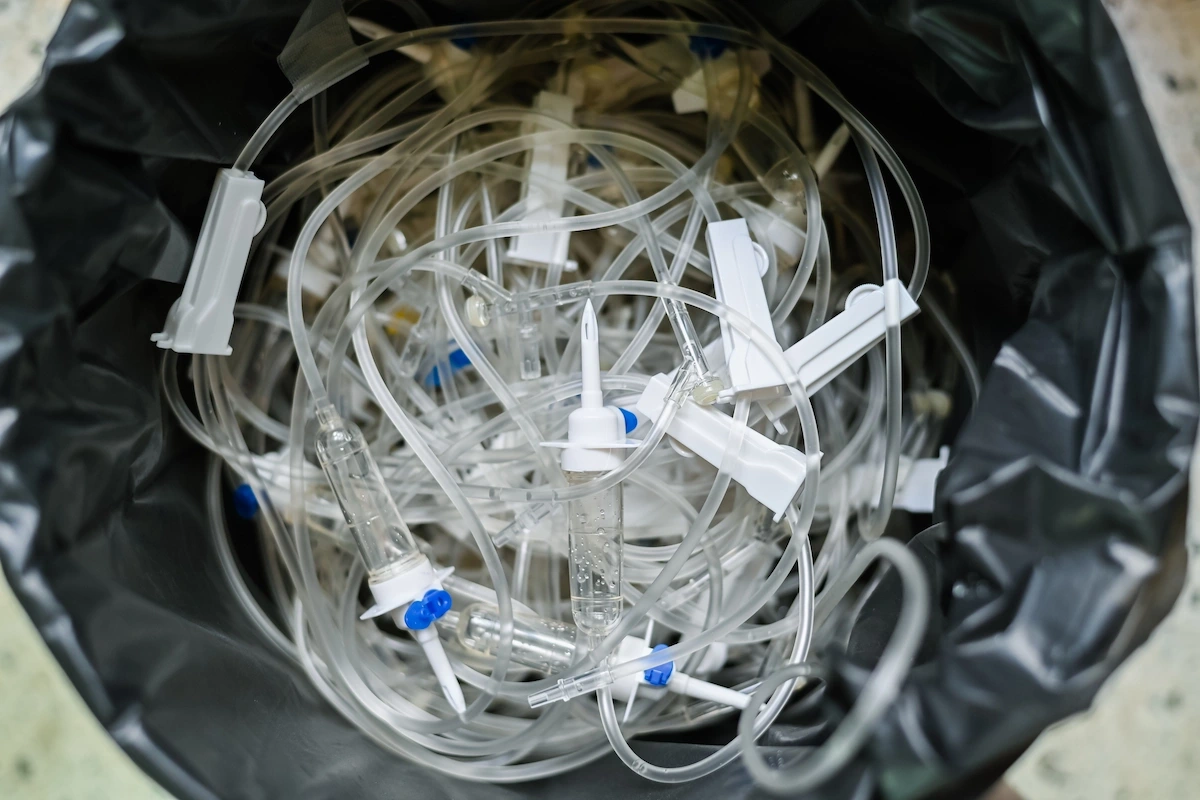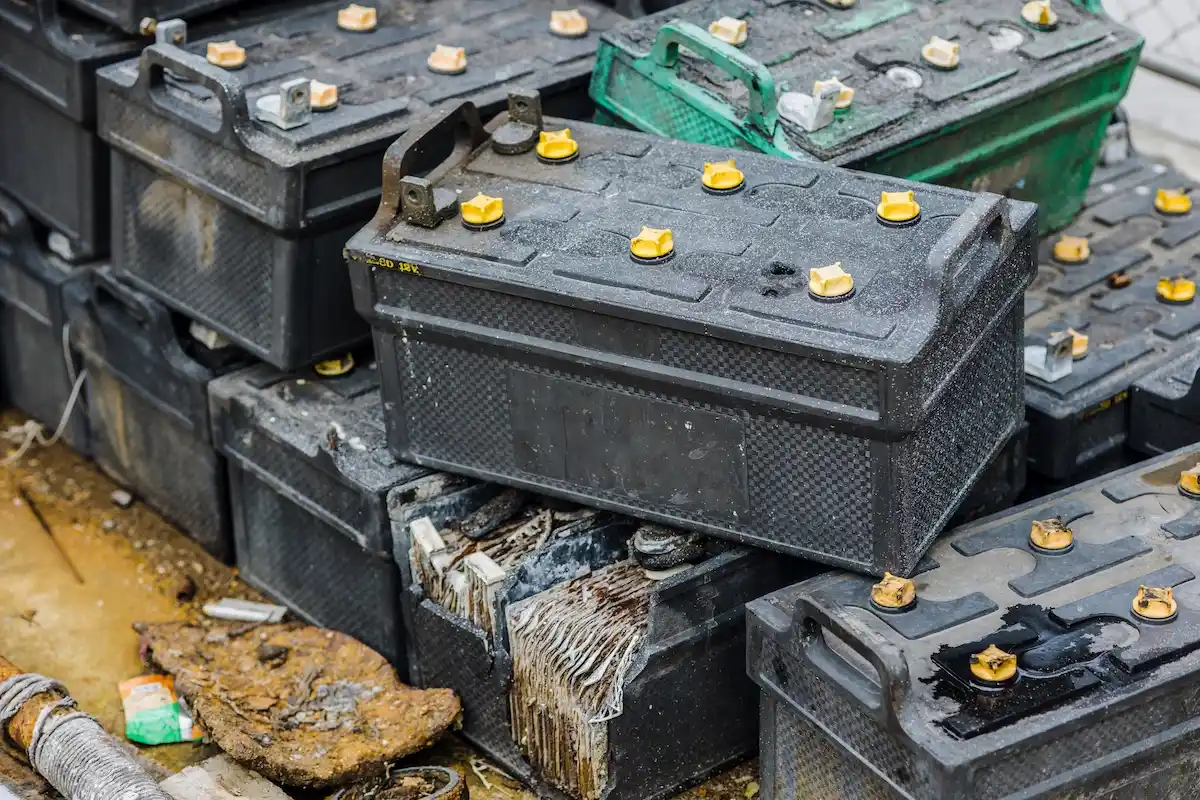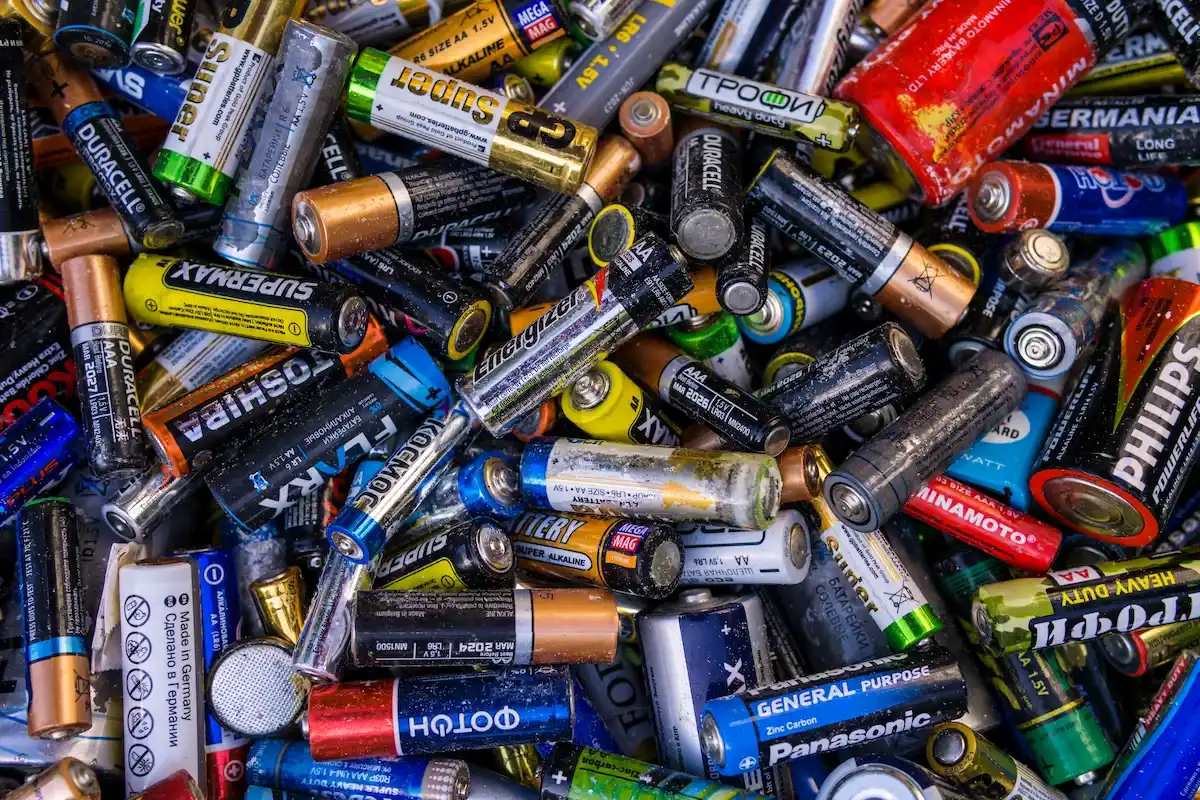Table of Contents
Hazardous waste is one type of waste that must be processed carefully to prevent environmental pollution and harm to human beings.
Yet, did you know that hazardous waste is also around us? That’s why you must know examples of hazardous waste to process it wisely. This article discusses the examples of hazardous waste and their properties, so read it until the end!
The Characteristics of Hazardous Waste

The management of hazardous waste in Indonesia is regulated in Law Number 32 of 2009 about Environmental Protection and Management. According to Badan Pusat Statistik, 87% of the hazardous waste was processed and 18% had not yet been processed in 2017. This number has decreased from 2016, when the amount of B3 waste managed reached 98.05%.
Hazardous waste has particular properties that make it different from other kinds of waste, such as:
1. Flammable
The first characteristic of hazardous waste is ignitable and flammable, especially waste made of combustible materials, like alcohol. This kind of waste can ignite immediately when exposed to fire or its spark.
In addition, some types of hazardous waste can also burn easily if rubbed together. Then, another characteristic that you might find is that it can burn continuously and never go out.
2. Explosive
Explosive hazardous waste usually undergoes a physical or chemical reaction, producing gas and high pressure, and then explodes. Explosive waste can endanger the surrounding environment, especially waste that is easily exploded due to rubbing, sunlight, and fire.
3. Infectious
Infectious waste usually comes from medical and laboratory activities, such as used syringes, shattered glass from labs, used bandages, and many more. This type of waste can spread viruses and bacteria to humans.
4. Reactive
Reactive waste has an unstable condition, even when it is in a normal state. Reactive waste can explode, emit smoke, change color, or release gas.
5. Toxic
Hazardous waste is categorized as toxic after its characteristics are determined through a series of tests, such as subchronic tests, LD50 toxicology tests, and TCLP. After going through testing, hazardous waste will be grouped according to its level.
6. Corrosive
Corrosive waste usually has a pH similar to or less than 2, making it very acidic, or a pH similar to or more than 12.5, making it very alkaline. Corrosive and hazardous waste can destroy other items, like iron, and irritate skin.
Read also: 8 Ways of Organic Waste Management, Easy and Eco-Friendly!
Examples of Hazardous Waste

After learning about the characteristics of hazardous waste, you have a depiction of this type of harmful waste. However, do you know that hazardous waste must be processed carefully using special methods that are perhaps different from inorganic or organic waste?
Therefore, you must know the examples of hazardous waste to separate it and avoid processing it with other wastes. Below are the examples of hazardous waste you should know:
1. Empty Aerosol Cans
The first example of hazardous waste is aerosol cans. Some products that use aerosol cans are mosquito repellent sprays, hairsprays, and air fresheners. These cans may contain toxic substances or product residues, so they must be managed carefully.
2. Used Batteries
Have you thrown used batteries, like remote control or clock batteries, directly into the trash bin? You had better not mix used batteries with other household waste because batteries are hazardous waste.
Batteries contain some chemicals that can harm the environment and humans if not managed properly, such as carbon, zinc, a mixture of manganese dioxide, and a mixture of ammonium chloride with carbon fiber.
In fact, rechargeable batteries contain cadmium, nickel, potassium hydroxide, and alkaline. If disposed of carelessly, the chemicals in batteries can pollute the environment and potentially cause metal poisoning.
3. Medical Waste
Medical waste, like used syringes, used infusion tubes, expired drugs, used bandages, etc., belongs to hazardous waste. Used syringes and other equipment that may come into contact with patients can spread disease. Also, expired drugs, which are chemical substances, can pollute the environment.
4. Bulbs
The next example of hazardous waste is bulbs. After changing the bulbs at home, you must separate them from other household waste because bulbs contain nickel and mercury that can harm your health.
Moreover, bulbs are made of glass. If mixed with other waste in a broken or shattered state, it can be dangerous for you or the waste manager.
Read also: How to Carry Out Household Waste Management in 8 Ways
5. Mercury Thermometer
Do you still use a mercury thermometer at home? Then, make sure to dispose of it carefully because it contains about 500 mg of mercury as a temperature indicator. Mercury is dangerous for your body.
6. Asbestos Waste
Asbestos is often used to build houses or other buildings. However, asbestos should not be disposed of with other materials, such as wood or iron, and should be separated since it can cause respiratory problems.
7. Used Motor Oils
Motor oils contain heavy metals, which are bad for your health if you are exposed to them. Thus, when you are done with the repairs, store motor oils in a closed and not easily damaged container to prevent leaks.
8. Electronic Waste
Electronic waste (e-waste), including computer parts and used televisions, is classified as hazardous waste because it contains materials that can cause harm, like printed circuit boards and heavy metals.
E-waste management is also carried out specifically because only those who have a license from the Ministry of Environment and Forestry can process it. So, do not dispose of e-waste carelessly!
9. Used Accumulator Batteries
In addition to used motor oils, used accumulator batteries are also hazardous waste. Accumulator batteries contain sulfuric acid, which is corrosive and can damage other items. Additionally, sulfuric acid from accumulator batteries can threaten humans as it can cause burns.
10. Used Printer Inks
Used printer ink should also not be thrown away because it contains activated carbon, which can be harmful to human health. They can also irritate skin and eyes if they are not processed properly.
That concludes the examples of hazardous waste and their characteristics. Hazardous waste is different from organic and inorganic waste since it can pollute the environment if you do not manage the waste appropriately. Thus, do not throw it away carelessly!
Aside from sorting the waste according to type for a greener environment, you can also join Indonesia Asri to be a Warga Asri. By becoming Warga Asri, you can join many programs, one of which is exciting challenges from #SiPalingSustainable that help you live sustainably.
Register yourself now and show your biggest contribution to the environment!
Read also: Organic and Inorganic Waste: 6 Differences You Can’t Miss!









